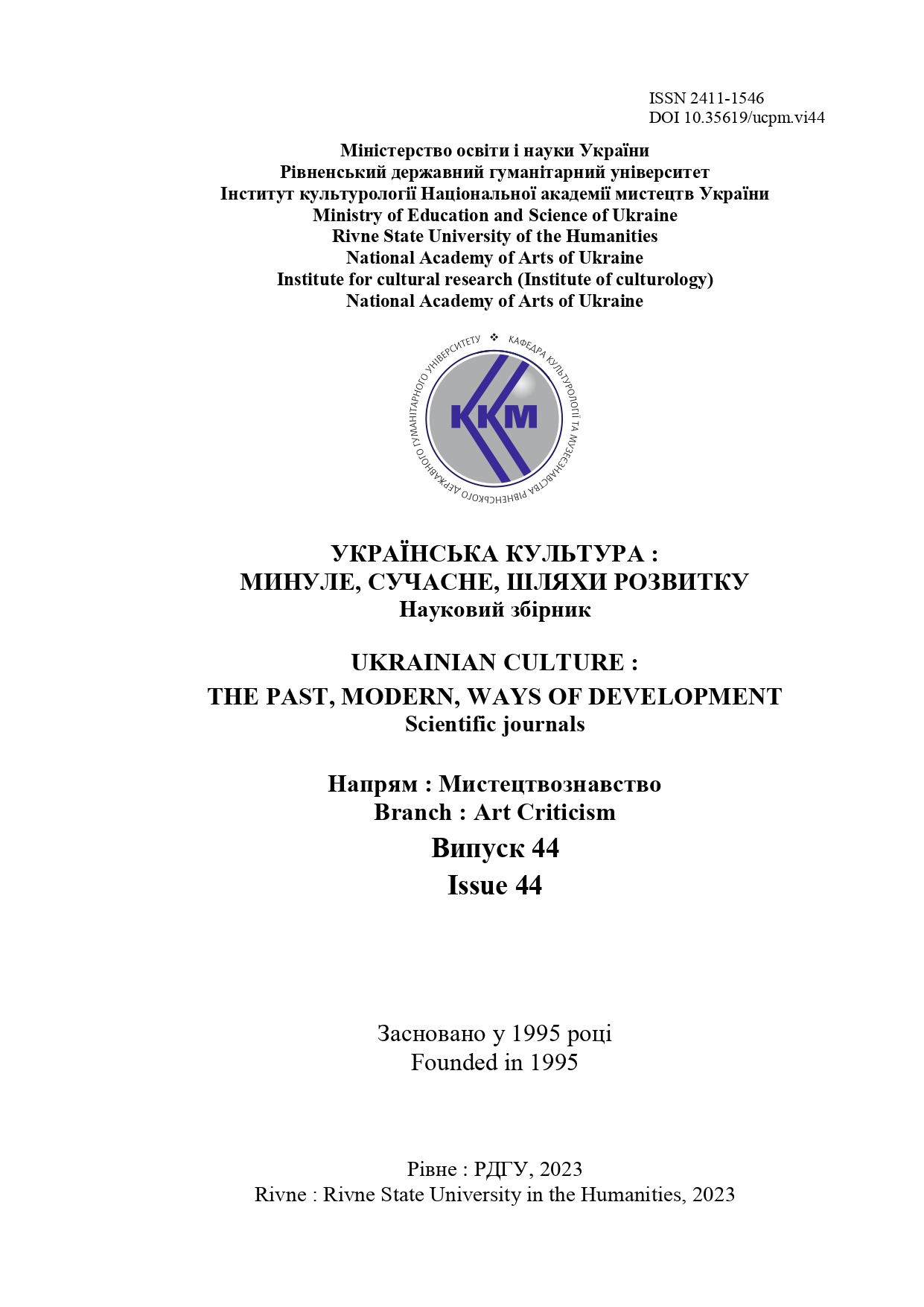UKRAINIAN KOBZA : ORIGINAL INSTRUMENTAL PROTOTYPE AND WAYS OF MIGRATIONS
DOI:
https://doi.org/10.35619/ucpm.vi44.596Keywords:
musical archeology, iconography, output instrumental рrototype, kobza, long-necked lute, short-necked lute, iconography, Hornbostel-Sachs classification of musical instruments.Abstract
Aim of the paper – the introduction of new archaeological, iconographic and written sources into the scientific circulation, which from new positions make it possible to find out the deep genetic origins of the kobza and its adaptation in the traditional musical and instrumental culture of Ukraine.
Research methodology. The methodology is applied in the article historical and comparative study of the Ukrainian kobza as a lute-like instrument with similar archeological and iconographic musical instruments of Central Asia, Transcaucasia and the Caucasus.
Results. An instrumental analysis of the initial prototype of the neck chordophones, which became the basis of the formation of the Ukrainian kobza, was carried out. The migration paths of the initial instrumental prototype of the kobza from the territory of Central Asia, through Transcaucasia and the Caucasus to the forest-steppe and steppe areas
of Ancient Ukraine, to the Northern Black Sea region were established. As in Eastern musical iconography, kobzas in Ukraine existed in two varieties – with short and long necks, with a shovel-shaped and round resonator body.The shortnecked kobza also had two varieties: 1) as a lute-like instrument with 3-4 fretted strings and 2) as an instrument with
additional short melodic strings attached to the resonator body (so-called prystrunky). The melodic strings were bilaterally symmetrically arranged with respect to the fingerboard strings. The image of such a kobza was preserved in I. Repin's painting «Zaporozhians writing a letter to the Turkish Sultan» (1890). Turkic instruments could influence the formation of the lute-like kobza only indirectly, since they themselves were strongly influenced by the Scythian, Sarmatian and Alanic instrumental traditions.
Novelty. New archeological, iconographic materials, written and linguistic sources have been included, giving grounds to establish in a new way the time of appearance of kobza on the territory of Ukraine and to deepen the lower historical limit of the process of its adaptation on Ukrainian lands to the Scythian-Sarmatian times.
Practical significance. The proposed methodology for the study of the genesis and migration paths of the original prototype of the Ukrainian kobza and its functioning in the Ukrainian traditional musical culture will make it possible to apply it to the study of the genesis of other musical instruments of the Ukrainian people in its historical relationships with other cultures of the East and West.


